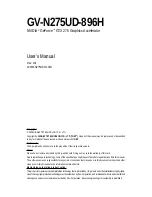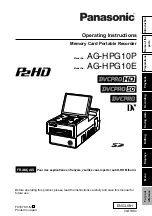
PCI Quad 422/485 Card
Chapter 10 Optional RS422/485 Operation
x
52
RS485 Cable.
For best noise immunity use twisted pair cables to make the RS485 connection. In Half
Duplex wiring only 1 twisted cable pair is needed. Two twisted pair cables are needed
for Full Duplex communications.
Use screened twisted pair Belden cable 9729 and 9829, UL type 2493 and 2919 or IBM
Part No 4716748 cable to make the RS485 connection. Terminate the twisted pair cable
at either end in its characteristic impedance, which for the Belden 9729 cable is 120
Ohms. Unscreened Belden type 8795 may also be used in less noisy environments.
RS485 One Talker - Many Listeners, Half Duplex.
There are several schemes for connecting RS485 devices depending on the
characteristics of the system. In many cases there will be only one device, which can
transmit, data and all the others simply listen to it. This scheme is used for theatrical
lighting intensity control in the DMX512 standard. This is shown below. For the talker
the RS485 TXD GATE jumper should remain in the factory set position, i.e. transmitter
is always enabled. There is NO multiplexing of the TXD and RXD lines. Data is only
flowing one way, from PC outwards, and is thus a Half-Duplex configuration, only one
twisted pair cable is needed.
Note: The Receiver end of MAIN line terminated in characteristic impedance by
ONBOARD resistor networks, stubs off the main not terminated.
In the above scheme, one RS485 device is talk only, it transmits data, but it does not
receive any. The other RS485 devices are receive only, they do not transmit any data at
all.
Half Duplex Settings of RS485 Multiplex
Both jumpers shorted, causing the RXD- & TXD- and the RXD+ & TXD+ signals to
short together at the 9-pin connector.
RS485 Many Talkers- Many Listeners, Half Duplex.
Another popular RS485 layout is for multiple talkers and multiple listeners. This is
shown below. This is also known as "party line" transmission. It is imperative to have
some method of preventing two devices trying to drive the data lines at the same time.
The normal method is to use the RTS line as a talk enable. The RTS line should go true
immediately prior to the data transmission and go false immediately after the last byte in
the stream is sent.





































